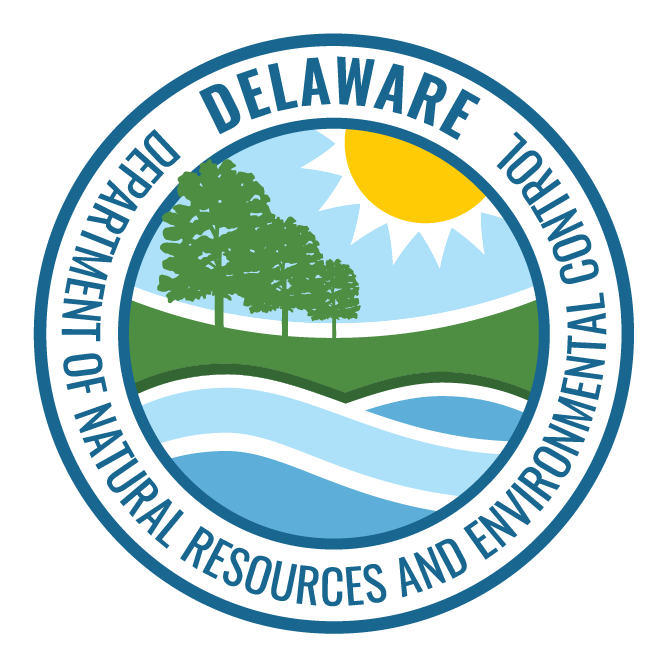Pages Tagged With: "Health and Safety"
Swimming Advisory Caution
The DNREC Recreational Water Program monitors bacterial water quality at established sampling sites throughout the state from May through September. If bacterial sampling results exceed state standards, DNREC issues swimming advisories for Atlantic Ocean beaches, as well as for Delaware Bay beaches south of and including Lewes Beach and for Lake Como in Smyrna.Mosquito Control
DNREC’s Mosquito Control Section provides mosquito control services throughout Delaware to maintain quality of life and protect public health by reducing the possibility of mosquito-borne illnesses. For help with nuisance mosquitoes where you live, call one of our field offices: The Northern Delaware Office, 302-836-2555, serving New Castle CountyVibrio Control Plans
Vibrio is a naturally occurring bacteria present in high levels in seawater when temperatures are warm. It can cause serious illness in humans. The National Shellfish Sanitation Program requires Delaware to implement plans to reduce the risk of Vibrio illnesses from oysters harvested in Delaware. Vibrio — Vibrio parahaemolyticus (V.p.) — canAir Quality Forecast
Air Quality Guides for Ozone and Particulate Matter The following are links to guides from the EPA, in English and Spanish, to help readers reduce their exposure and protect their health when the air quality is bad. Guide for ozone Guia de la calidadPilottown Road Mitigation Study
The Department of Natural Resources and Environmental Control (DNREC) has undertaken an investigation of flood mitigation options for the section of Pilottown Road, in Lewes, that crosses Canary Creek near its confluence with the Broadkill River. The section of Pilottown Road leading to the Canary Creek bridge is frequently inundatedBlue-Green Algae in Delaware
Blue-green algae blooms occur each year on Delaware ponds, lakes and some tidal freshwater areas. Because they can have harmful effects on people and animals, the state has posted warning signs at water bodies which historically have had blooms.Contact Us
Georgetown North Groundwater Site
The U.S. Environmental Protection Agency (EPA) has added the Georgetown North Groundwater Site to the Superfund National Priorities List (NPL). The NPL is EPA’s list of priority sites requiring evaluation for possible remediation from releases of hazardous substances, pollutants or contaminants. [collapseReporting Tick Interactions
Knowing what species of tick has attached to you, a family member, or a pet will help determine whether you may be at risk for a tick-borne disease. Note: The state of Delaware does not provide tick pathogen testing services.
Archived Delaware TRI Reports
An archive of state-produced Toxics Release Inventory (TRI) reports for Delaware. Starting with data for 2020, this information is part of a national dataset managed by the US EPA. 2019 TRI Report2019 TRI Facility Profiles 2018 TRI Report2018 TRI Facility Profiles 2017 TRI Report2017Floodplain Mapping for Bundicks Branch
DNREC and the federal government are working on an update of the floodplain maps for Bundicks Branch, located west of Lewes, in Sussex County. The study involves new data and engineering models. The floodplain map update will occur through a process called a Letter of Map Revision (LOMR). TheTicks and Domestic Animals and Wildlife
It’s not just humans who can be affected by ticks. Tick-caused diseases and related problems also affect many wildlife species and domestic animals. Dogs Dogs are susceptible to both Lyme disease andProtecting Yourself from Ticks
Ticks live in several different habitat types and can be found throughout Delaware in forests, meadows and wetlands. They are also found in yards and residential areas. Ticks are active year-round if temperatures are above freezing.Tick Management
There are a few simple measures you can take to help keep you safe from ticks around the home. In the Yard Remove leaf litter and invasive plants. This helps to eliminateTicks of Delaware
There are five species of tick commonly found in Delaware. Identifying which tick has bitten you can help you take steps to protect yourself. There are also a handful of arthropods that are sometimes mistaken for ticks.Tick Program
DNREC’s tick program conducts year-round, statewide active and passive surveillance for ticks and tick-borne pathogens. Knowing when and where different tick species occur in the state, and whether or not they’re infected with pathogens such as the agent of Lyme disease, helps protect public health. [panel type=”success”Tick-Associated Diseases in Delaware
While Lyme disease is the most common tick-borne infection in Delaware, there are other tick-associated diseases to be aware of in case you suffer a tick bite. Note: The state of Delaware does not provide tick pathogen testing services.
Mosquito Control Spraying Calendar
The DNREC Mosquito Control Section provides multiple communication channels to share information about planned mosquito control spraying in Delaware. These include the mosquito control spraying calendar (below), the online Spray Zone Map and the Spray Zone Notification System. https://calendar.google.com/calendar/embed?src=glasgowmosquito%40gmail.com&ctz=America%2FNew_YorkEpisodic Events for Hazardous Waste Generators
A facility may incur an episodic event — planned or unplanned — wherein an increase in the generation of hazardous wastes exceeds the calendar month quantity limits for the generator’s usual category. Under the regulations, Very Small Quantity Generators and Small Quantity Generators are allowed episodic events. [panelPFAS Investigation Sites
This page contains a list of sites being investigated by DNREC for per- and polyfluoroalkyl substances (PFAS) in drinking water, groundwater or surface water in Delaware.Contact Us
Exposure Assessment Near New Castle Air National Guard Base
In 2019, the Centers for Disease Control and Prevention (CDC) and the Agency for Toxic Substances and Disease Registry (ATSDR) initiated an exposure assessment for perf- and polyfluoroalkyl substances (PFAS) in the community near the New Castle Air National Guard Base in New Castle County. [panelK-9s – DNREC’s Natural Resources Police Superpower
They find lost children and suspects, sniff out illegal drugs and perform many other law enforcement tasks. But instead of two legs, they have four. They’re enforcement officers like any other with our Natural Resources Police.Dam Safety
The Delaware Dam Safety Program works to reduce the risk of failure of dams and to prevent injuries, property damage, and loss of reservoir storage due to dam failure. It oversees the design and construction, operation and maintenance, and inspection of regulated dams in Delaware. [panel type=”success” heading=”ContactSolid and Hazardous Waste Transporter Permits
The transportation of non-hazardous solid waste (including scrap tires and infectious waste), and hazardous waste (including used oil), is subject to regulation in Delaware.Contact Us
Compliance and Permitting Transporter Permits 89 Kings Highway Dover, DE 19901 302-739-9403
Accidental Release Prevention
The DNREC Accidental Release Prevention (ARP) Program ensures that facilities that use Extremely Hazardous Substances (EHS) maintain Risk Management Plans (RMP).Contact Us
Anuj Kumar Program Manager II Prevention and Preparedness Section 302-395-2523
Floodplain Management
The DNREC floodplain management program works to preserve public health, safety, and well-being and protect property by reducing flood hazard risks statewide.Contact Us
Kathy Potter 302-608-5500
Floodplain Mapping
The DNREC Floodplain Management Program works with FEMA to improve the accuracy of Flood Insurance Rate Maps, which were originally created in the 1970s, and to provide technical support pertaining to flood risk.Contact Us
Alicia Sweet 302-608-5500
The National Flood Insurance Program
Homeowners’ insurance does not cover flood damage. Flood insurance is available through the National Flood Insurance Program.Contact Us
Kathy Potter 302-608-5500
PCB Mass Loading Studies
The DNREC Division of Waste and Hazardous Substances and Division of Watershed Stewardship are working together to study polychlorinated biphenyls (PCBs) and how they enter surface waters from hazardous substance release sites around the state. Phase I SummaryA Watershed Approach
The Watershed Approach to Toxics Assessment and Restoration (WATAR) is a watershed-scale approach to evaluating where contamination comes from, how it gets into Delaware’s waterways and water bodies, and what effects it has on watershed health. https://youtu.be/CqFQInRpVYY
PCB Mass Loading Studies: Phase II Report
The phase II report from the DNREC initiative to study polychlorinated biphenyls (PCBs) and how they enter surface waters from hazardous substance release sites around the state. PCB Mass Loading from Hazardous Substance Release Sites to Surface Waters in New Castle, Kent and Sussex Counties Part 1 — SummaryPCB Mass Loading Studies: Phase I Report
The phase I report from the DNREC initiative to study polychlorinated biphenyls (PCBs) and how they enter surface waters from hazardous substance release sites around the state. PCB Mass Loading from Hazardous Substance Release Sites to Surface Waters of the Christina River Basin Report Summary Figure 1 EvaluatedState Emergency Response Team
The State Emergency Response Team (SERT) responds to releases of oil and hazardous materials including non-fixed facility radiological releases in the State of Delaware. Incidents can range from transportation-related spills to major threats such as weapons of mass destruction. The SERT consists of the DNREC Emergency Response Team, the Delaware Emergency ManagementResponding to Environmental Emergencies
The DNREC Emergency Response Branch is responsible for responding to petroleum and hazardous materials incidents in the state. Incidents can range from transportation-related spills to major threats such as weapons of mass destruction.Contact Us
Emergency Response and Strategic Services
The DNREC Emergency Response and Strategic Services Section oversees emergency response, accidental release prevention, emergency planning and community right-to-know, and boiler safety programs. It assists with public communications and manages financial and paralegal support for the Division of Waste and Hazardous Substances.Contact Us
Large Quantity Generators
If a facility generates hazardous waste in quantities greater than 1,000 kilograms (≈2,200 pounds) or generates acutely hazardous waste in quantities greater than 1 kilogram (≈2.2 pounds) in a calendar month, that facility is defined, under Delaware’s Regulations Governing Hazardous Waste, as a Large Quantity Generator (LQG). [panelElectronic Waste
In this world of rapidly changing technology, disposal of electronic waste (e-waste) has created a growing waste stream. The Division of Waste and Hazardous Substances provides guidance for the management of these wastes by businesses under the state’s hazardous waste regulations.Contact Us
Universal Waste Rule
Universal wastes are items that are generated by a large number of businesses in relatively small quantities. Five hazardous wastes are identified as universal wastes under Section 273 of Delaware’s Regulations Governing Hazardous Waste. They are batteries, mercury-containing equipment, obsolete agricultural pesticides, lamps and aerosol cans. [panelSolvent-Contaminated Cloth Wipes
The Delaware Department of Natural Resources and Environmental Control, Compliance and Permitting Section provides the following guidance on the management of cloth wipes, including shop towels, and rags contaminated with hazardous wastes identified via characteristic or listing in the Delaware Regulations Governing Hazardous Waste (7 DE Admin. Code 1302).Managing Fluorescent Lamps
The following are answers to commonly asked questions regarding the management of waste fluorescent lamps that exceed the regulatory limit for mercury via the Toxicity Characteristic Leaching Procedure (TCLP).Contact Us
Compliance and Permitting Section 302-739-9403
Very Small Quantity Generators
If a facility generates hazardous waste in quantities of less than 100 kilograms (≈220 pounds or approximately 25 gallons) or is the generator of acutely hazardous waste in quantities of less than 1 kilogram (≈2 pounds) in a calendar month, that facility is defined, under Delaware’s Regulations Governing Hazardous Waste, as a Very Small QuantityManaging Waste
The Division of Waste and Hazardous Substances is responsible for controlling the storage, transport and disposal of solid, infectious and hazardous waste in Delaware. The Division also coordinates recycling and yard waste management. Solid Waste HazardousSalvage Yards
Salvage yards are an important part of the economy. They provide a valuable service, helping recycle what can be recycled and dispose of what cannot.Contact Us
Compliance and Permitting Section 302-739-9403
Auto Repair Shop Waste
Auto Repair Shops generate hazardous waste that must be managed in accordance with Delaware’s Regulations Governing Hazardous Waste. Hazardous waste mismanagement adversely impacts human health and the environment.Contact Us
Compliance and Permitting Section 302-739-9403
Solid Waste
Solid Waste is any garbage, refuse, refuse-derived fuel, waste wood from demolition or construction, sludge from treatment plants, or other discarded material. It can include wastes resulting from industrial, commercial, mining and agricultural operations, and from community activities.Contact Us
Hazardous Waste
Hazardous wastes are solid wastes that are inherently dangerous to handle or dispose. They include chemicals such as solvents, mercury in thermometers, and lead in paint. The Division of Waste and Hazardous Substances regulates transporters, businesses and industry so that hazardous wastes are managed properly and cleaned up in the event of a spill orUsed Oil Management
The following provides an overview related to commonly asked questions about the proper management and disposal of used oil regulated by Part 279 of Delaware’s Regulations Governing Hazardous Waste.Contact Us
Mercury and Mercury-Containing Equipment
Elemental mercury is liquid at room temperature, with a metallic and shiny appearance. It is conductive and highly volatile. Mercury can have serious health impacts on humans.Contact Us
Compliance and Permitting Section 302-739-9403
Small Quantity Generators
If a facility generates hazardous waste in quantities between 100 kilograms (≈220 pounds) and 1,000 kilograms (≈2,200 pounds) and generates acutely hazardous waste in quantities of less than 1 kilogram (≈2.2 pounds) in a calendar month, that facility is defined, under Delaware’s Regulations Governing Hazardous Waste, as a Small Quantity Generator (SQG). [column md=”5″Solid Waste Facilities
The Compliance and Permitting Section (CAPS) of the DNREC Division of Waste and Hazardous Substances issues permits for all solid and hazardous waste facilities, such as operating and closed landfills and transfer stations, recycling, composting and resource recovery facilities.Contact Us
Managing Used Aerosol Cans
For businesses, aerosol cans pose a unique hazardous waste determination problem because they consist of three different types of materials, each of which may be classified as hazardous waste — the can itself, liquid product contained in the can, and the gaseous propellant.Contact Us
Page: 12 of 2 total pages




